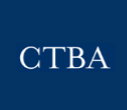Creating a Revenue Opportunity through Opportunity Zones
By Clara Fong, Fiscal Policy Intern & Allison Flanagan, Director of Policy Analysis
Since its creation in 2017, Opportunity Zones have been the source of controversy, with proponents believing it will narrow the geographical inequity gap across the country, while critics claim its main benefit is to wealthy investors. In this blog post, CTBA will provide an overview of what Opportunity Zones are, why they elicit controversy, and how some states are looking to decouple from the federal tax law.
What are Opportunity Zones?
Opportunity Zones, which were part of the 2017 Tax Cuts and Jobs Act, were designed by the previous administration to attract investment in “economically distressed communities,” as defined by the IRS. Governors across the 50 states, and the Mayor of Washington D.C., identified an Opportunity Zone as “low-income communities” in their states based on Census data, which were then certified and designated Qualified Opportunity Zones (“QOZ”) by the IRS in 2018.
The program provides investors tax breaks in three ways:
i. investors can defer capital gains tax by investing their gains in Opportunity Zone Funds (OZF);
ii. investors who hold their investment in QOZs for at least seven years receive a 15% reduction in capital gains tax; and
iii. investors who maintain their investment in QOZs for at least ten years receive a permanent capital gains tax exemption for all of the gains realized on Opportunity Zone investments through 2047.
According to the Economic Innovation Group, a bipartisan public policy organization, Opportunity Zone investment would reinvest over $6.1 trillion in unrealized capital gains into QOZs.
QOZs in the continental United States can be found in Figure 1.
Why Are They Controversial?
Despite the bipartisan support for Opportunity Zones and few case studies where investments have benefitted minority-owned small businesses, substantial research finds that these investments have not sufficiently addressed geographic inequality or helped alleviate racial inequity. In reality, it has only helped investors’ bottom line. Specifically, some opportunity zones are not “economically distressed,” spurring investment in areas that would have otherwise already been invested in. While investors benefit from the tax break, there are currently no provisions that hold investors accountable for the outcome of their investments.
Reaching Distressed Communities
One criticism by researchers is about the law’s vague and obscure definitions of “low-income communities” and whether Opportunity Zone investments actually reach those most in need. While proponents argue that QOZs have a higher poverty rate than national averages, the selected tracts often have other structural advantages that would make them attractive investments without the new zoning. For example, until North Carolina’s recent “decoupling” from QOZs, Chapel Hill — a college town for the University of North Carolina — was considered a QOZ because of its 47 percent poverty rate (three times the national average). However, the median age of residents in Chapel Hill is 22, as a result of being largely populated by university students, and the median house ownership value is $500,000, triple the state’s average.
College towns are one loophole in the tax law that have allowed investors to benefit from QOZs while still investing in more “affluent” zones. A study conducted by the Brookings Institution uncovered that the broad eligibility of QOZs qualified 57 percent of American neighborhoods and over 33 college towns as Opportunity Zones. While truly “economically distressed” zones certainly exist among the 8,700 total QOZs, “affluent” opportunities attract a larger share of investment, resulting in a loss in federal revenue with few to none of the equity gains promised.
Lack of Impact Measurements
The tax breaks do not ensure that local residents benefit from investments because there are no regulations on Opportunity Zone investments. Although recent efforts from the IRS aim to create transparency around the impact of Opportunity Zone investments, such as measures of poverty alleviation or unemployment reduction, as little as 40 percent of the original investment fund could end up actually benefitting the designated QOZ due to the complex determinants of qualifying for the tax break. The lack of investor accountability, therefore, raises concerns about how investments will be used and who they truly serve.
Decoupling from Opportunity Zones
Due to the substantial revenue loss from the tax breaks and the little investment it has brought to divested communities, several states have considered “decoupling” their income tax from federal Opportunity Zone laws.
How does this affect Illinois?
In Illinois currently, there is an ongoing effort for the state to decouple from federal tax breaks for its 327 Opportunity Zones. This means Illinois would no longer lose out on deferred capital gains that otherwise would have been taxed. There is no exact estimate for how much Illinois would reclaim in capital gains because the estimates are heavily reliant on the investment in each state. Without adequate oversight and tracking of fund data, the estimates are not entirely reliable. With that said, some states with similar bills as Illinois have estimated their potential revenue impacts if they were to decouple from the federal tax breaks.
A similar Opportunity Zone decoupling bill to Illinois was proposed in Maryland with an evaluation of the tax deferrals that would be added back into the General Fund to be between $10 million and $13 million. Maryland has 149 QOZ to Illinois 327 OZ.[1]
Massachusetts estimates about $9 million (FY 2022) for its 138 QOZ.
Virginia also estimated between $8 and $9 million for its 212 QOZ annually.[2]
An organization in New York estimated $7 million annually for New York’s has 514 QOZ.
Again, these estimates are highly dependent on the amount of investment in each state and can vary dramatically. However, one fact remains clear: decoupling from the federal Opportunity Zone tax breaks would provide revenue for Illinois, and it would still provide tax breaks on the federal level for investors.
